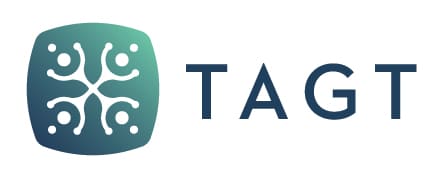Universal screening can be a foundational part of a comprehensive assessment process that evaluates all students for various specialized services, such as special education, gifted education, and language development. Unlike traditional identification methods, which rely on referrals from educators or parents/guardians prior to assessment, universal screening systematically includes all students in a formal assessment process (Johnsen et al., 2021; Lakin, 2016). Ikeda et al. (2008) define universal screening as the “systematic assessment of all children within a given class, grade, school building, or school district on academic and/or social-emotional indicators that the school personnel and community have agreed are important” (p.103). In traditional referral-based identification, only some students are recommended for further evaluation, while in universal screening, every student undergoes at least one formal assessment as the initial step (Lakin, 2016). If universal screening is part of a formal identification process for specialized programs, it is typically followed by more specific assessments related to the targeted services or programs.
The primary challenge school districts face in identifying students for gifted programs is ensuring equitable access for students from Culturally, Linguistically, and Economically Diverse (CLED) backgrounds. Except for Asian and Asian American students, those from CLED communities are significantly underrepresented in gifted programs (de Wet & Gubbins, 2011). These programs have often been criticized for disproportionately serving White, middle-class, high-achieving students (Briggs et al., 2008). Research by McBee et al. (2016) revealed that current referral-based testing methods miss a substantial number of gifted students, with up to 60% being false negatives—students who are gifted but not identified as such. Gentry et al. (2019) further estimated that 3.6 million gifted students are overlooked, exceeding the 3.2 million students who are identified. The study highlighted that students from Black, Latinx, and Native racial groups, as well as those attending Title I schools or schools in rural and town settings, are more likely to be missed during the identification process. To address these disparities, the 2019 National Association for Gifted Children (NAGC) Pre-K–Grade 12 Gifted Programming Standards recommend universal screening as an evidence-based and more equitable approach to identifying gifted students from diverse backgrounds (NAGC, 2019, Evidence-Based Practice 2.3.1).
Johnsen et al. (2021) outlined the primary purposes of universal screening as follows: (1) increasing the number of referrals for gifted services, (2) reducing referral biases, and (3) expanding identification opportunities for underrepresented groups, including English language learners (ELLs), economically disadvantaged students, and culturally diverse students. Consequently, universal screening provides data for various uses, supporting greater representation of CLED students in gifted programs. Additionally, aligning universal screening with district goals and desired outcomes can foster support and create professional learning opportunities (Johnsen et al., 2021).
The Effectiveness of Universal Screening
Lakin (2016) advocates for universal screening as a strategy for districts aiming to increase diversity in gifted programs and emphasizes the need for further research on factors such as optimal cut-scores, the alignment of screening with follow-up assessments, and the broader implications for program relevance. While acceleration and grouping are widely endorsed for gifted students, only one quasi-experimental study has directly examined the effects of universal screening.
Card and Giuliano (2016) analyzed longitudinal data from a large, diverse school district in Florida that transitioned from a referral-based system to universal screening for identifying gifted and talented students. Their study spanned six years: two years before implementation, two during, and two after a reduced version of the program ended due to funding cuts. Under the prior system, students needed a teacher or parent nomination to access individual intelligence testing. A score of 130 (98th percentile) was required to qualify as gifted, although students classified as disadvantaged—those who were ELLs or eligible for free or reduced lunch—needed a lower threshold of 116 (85th percentile). Final eligibility also considered teacher and parent input and a checklist of gifted traits like motivation, creativity, and adaptability (Card & Giuliano, 2016).
The universal screening process assessed all second-grade students using a nonverbal cognitive ability test. Those meeting the cut-scores (130 or 116) were referred for individual intelligence testing to confirm eligibility for gifted programs. Before universal screening, gifted programs were dominated by White students from high socioeconomic backgrounds, with African American and Hispanic students making up only 28% of third-grade gifted participants despite representing 60% of the overall student population. Following the implementation of universal screening, participation among underrepresented groups—including African American, Hispanic, ELL, and low-income students—increased by 180% (McBee, 2016). Additionally, the concentration of gifted students in a few schools decreased significantly. Previously, 18% of district schools enrolled 50% of all gifted students; after universal screening, 57% of schools housed half of the district’s gifted population (Card & Giuliano, 2016; McBee, 2016). Importantly, students identified through universal screening achieved academic gains comparable to those identified through traditional referral methods.
In summary, universal screening substantially increases representation of underrepresented groups in gifted programs, promotes more equitable access across schools, and maintains comparable achievement outcomes for students. However, the success of such initiatives depends on addressing challenges like effective communication, adequate training, strategic management, and appropriate time allocation (Johnsen et al., 2021).
Challenges in Universal Screening
Despite its effectiveness, universal screening faces several challenges. Implementing this approach requires substantial financial and logistical resources, including administering tests to all students and conducting follow-up individualized IQ assessments for those meeting initial criteria (Johnsen et al., 2021). This process places significant strain on district capacities, especially in times of budgetary constraints. Furthermore, transitioning to universal screening demands a district-wide commitment and significant adjustments to existing policies and practices, which can be difficult to achieve (Lakin, 2016). Implementing universal screening for gifted and talented programs can increase equitable access to services, but it also presents several challenges, including communication with parents and teachers, initiative and assessment fatigue, and time constraints (Johnsen et al., 2021).
Communication with Parents/Guardians
When all students are screened, parents and guardians may not fully understand the purpose of the assessment, leading to questions about whether it serves instructional improvement, intervention support, such as through a Response to Intervention (RtI) process, or gifted identification (Johnsen et al., 2021). For universal screening to effectively support diverse students, parents must be informed about the purpose and implications of the screening. Additionally, access to online identification forms can be a barrier, as some families may lack reliable internet or have a limited understanding of gifted education. To address these issues, administrators should employ multiple communication methods to clarify the purpose of the screening and support parents in understanding the process (Johnsen et al., 2021).
Teacher Communication and Training
Teachers also need clear guidance on universal screening, especially if it is part of a formal identification process. Educators may not initially see the benefit or be equipped to refer to students from CLED backgrounds if they primarily assess student achievement based on classroom performance, which may overlook talents shown in non-traditional ways (Brown et al., 2005). Ford et al. (2001) highlight that teachers may focus on deficits in CLED students rather than strengths, potentially leading to under-referral of these students for gifted programs. Professional development is essential for helping teachers recognize and support the diverse strengths of students from varied backgrounds, thereby improving referral accuracy and access to gifted services (Siegle & Powell, 2004).
Initiative and Assessment Fatigue
Introducing universal screening as a new initiative often compounds existing demands on educators, resulting in initiative fatigue—a sense of overwhelm and conflict due to multiple, simultaneous improvement efforts (Kuh & Hutchings, 2015). When initiatives involve additional assessments, stress levels can rise, especially if educators lack clarity about the purpose of the assessments. Teachers may feel that these assessments are a burden rather than a benefit to student learning, particularly if the connection to instructional outcomes is not explicit. To counteract this fatigue, administrators should communicate the rationale behind universal screening clearly and align it with existing goals to foster greater acceptance (Johnsen et al., 2021).
Time Constraints
Implementing universal screening requires time, both for administering assessments and for teachers to use the data effectively (Johnsen et al., 2021). Teachers often express the need for more time to plan, confer with students, and reflect on instructional practices. Adding another assessment without consideration of time demands can detract from valuable in-class instruction and out-of-class planning, potentially exacerbating educators’ frustration. Recognizing these time challenges early allows for better planning, such as scheduling flexibility and additional support to minimize the impact on classroom instruction.
Limitations of Universal Screening
Universal screening also has notable limitations. Post-screening stages of the identification process may reintroduce inequities (Johnsen et al., 2021). For example, higher SES families often have greater access to private testing for borderline candidates, providing additional opportunities for their children that families with fewer financial resources cannot afford. Additionally, inputs such as teacher evaluations and checklists used in final placement decisions may perpetuate biases against underrepresented groups. Another limitation is that not all students identified during the initial screening receive follow-up testing, often due to resource constraints, creating systemic gaps in the process (Morgan, 2020). Finally, the significant costs associated with universal screening deter many districts, particularly those with limited budgets, from adopting this approach (Lakin, 2016).
Practical Considerations
Legal Considerations
When implementing universal screening, educators must adhere to federal and state laws, as well as their school district’s policies regarding testing (Johnsen et al., 2021). Generally, parental/guardian consent is not required if all students are being assessed and the results will be used for instructional purposes. However, once a student enters the formal gifted identification process, parents/guardians must be notified.
At the beginning of the formal identification process, school districts are required to obtain parental/guardian consent for testing (Johnsen et al., 2021). Parents/guardians should be informed about the type of information being collected, the reasons for its collection, how it will be used, and to whom it will be disclosed (U.S. Department of Education, 2014).
Policies should address:
- The age or grade at which students should be identified.
- The types and characteristics of tests that may be used.
- The number and variety of criteria and sources required for placement decisions.
- The types of programs and services available to gifted students.
- All testing procedures must comply with federal and state regulations.
Planning Considerations
Planning and selecting assessments for universal screening should include three process: 1) Purpose-Driven Selection: The intended purpose of the assessment should guide the choice of instrument; 2) Technical Manual Evaluation: Review the technical manual for information on the test’s purpose, reliability, validity, and whether the norming sample aligns with the district’s population; and 3) Logistical Factors: Consider the timing (time of year and day), group size, target groups for testing, and the qualifications of test administrators or proctors (Johnsen et al., 2021).
Administrators must evaluate the system’s culture and principles when implementing changes (VanTassel-Baska & Johnsen, 2017). Guiding questions include:
Assessment Purpose:
- What is the purpose of the assessment?
- Will it serve multiple purposes?
Norms and Bias:
- Do the test norms represent the school district’s population?
- Does the test manual address reliability, validity, and potential bias?
Administration Details:
- What qualifications are required for test administrators?
- Will the test be administered to small or large groups?
- Who else will be present during testing?
- Where, when, and how will the tests be administered?
- Which students will take the test?
- What is the timeline for testing?
References
Briggs, C. J., Reis, S. M., & Sullivan, E. E. (2008). A national view of promising programs and practices for culturally, linguistically, and ethnically diverse gifted and talented students. Gifted Child Quarterly, 52(2), 131–145. https://doi.org/10.1177/0016986208316037
Brown, S. W., Renzulli, J. S., Gubbins, E. J., Siegle, D., Zhang, W., & Chen, C. (2005). Assumptions underlying the identification of gifted and talented students. Gifted Child Quarterly, 49(1), 68–79. https://doi.org/10.1177/001698620504900107
Card, D., & Giuliano, L. (2016). Universal screening increases the representation of low-income and minority students in gifted education. Proceedings of the National Academy of Sciences, 113(48), 13678–13683. https://doi.org/10.1073/pnas.1605043113
de Wet, C. E., & Gubbins, E. J. (2011). Teachers’ beliefs about culturally, linguistically, and economically diverse gifted students: A quantitative study. Roeper Review, 33(2), 97–108. https://doi.org/10.1080/02783193.2011.554157
Ford, D. Y., Harris, J. J., III, Tyson, C. A., & Trotman, M. F. (2001). Beyond deficit thinking: Providing access for gifted African American students. Roeper Review, 24(2), 52–58. https://doi.org/10.1080/02783190209554129
Gentry, M., Pereira, N., Maeda, Y., Whiting, G. W., & Gray, A. M. (2019). Gifted education in the United States: Laws, access, equity, and missingness across the country by locale, Title I school status, and race [Research report]. Purdue University.
Ikeda, M. J., Neesen, E., & Witt, J. C. (2008). Best practice in universal screening. In A. Thomas & J. Grimes (Eds.), Best practices in school psychology (Vol. 2, pp. 103–114). National Association of School Psychologists.
Johnsen, S. K., Simonds, M., & Voss, M. (2021). Background information for the instructor. In Implementing evidence-based practices in gifted education: Professional learning modules on universal screening, grouping, acceleration, and equity in gifted programs (pp. 13–65). Routledge. https://doi.org/10.4324/9781003235729
Kuh, G., & Hutchings, P. (2015). Addressing assessment fatigue by keeping the focus on learning. National Institute for Learning Outcomes Assessment, University of Illinois and Indiana University. https://www.learningoutcomesassessment.org/wp-content/uploads/2019/08/Viewpoint-KuhHutchings.pdf
Lakin, J. M. (2016). Universal screening and the representation of historically underrepresented minority students in gifted education: Minding the gaps in Card and Giuliano’s research. Journal of Advanced Academics, 27(2), 139–149. https://doi.org/10.1177/1932202X16630348
McBee, M. T. (2016). What you don’t look for, you won’t find: A commentary on Card and Giuliano’s examination of universal screening. Journal of Advanced Academics, 27(2), 131–138. https://doi.org/10.1177/1932202X16634141
McBee, M. T., Peters, S. J., & Miller, E. M. (2016). The impact of the nomination stage on gifted program identification: A comprehensive psychometric analysis. Gifted Child Quarterly, 60(4), 258–278. https://doi.org/10.1177/0016986216656256
Morgan, H. (2020). The gap in gifted education: Can universal screening narrow it?. Education, 140(4), 207-214. https://files.eric.ed.gov/fulltext/EJ1304434.pdf
National Association for Gifted Children. (2019). 2019 Pre-K–Grade 12 gifted programming standards. https://cdn.ymaws.com/nagc.org/resource/resmgr/knowledge-center/nagc_2019_prek-grade_12_gift.pdf
Siegle, D., & Powell, T. (2004). Exploring teachers’ biases when nominating students for gifted programs. Gifted Child Quarterly, 48(1), 21–29. https://doi.org/10.1177/001698620404800103
U.S. Department of Education. (2014). Transparency best practices for schools and districts. Privacy Technical Assistance Center. https://studentprivacy.ed.gov/sites/default/files/resource_document/file/LEA%20Transparency%20Best%20Practices%20final.pdf
VanTassel-Baska, J., & Johnsen, S. K. (2017). Making change happen: Implementing the teacher education standards in the real world of education. In S. K. Johnsen & J. Clarenbach (Eds.), Using the national gifted education standards for pre-k–grade 12 professional development (2nd ed., pp. 155–169). Prufrock Press.






